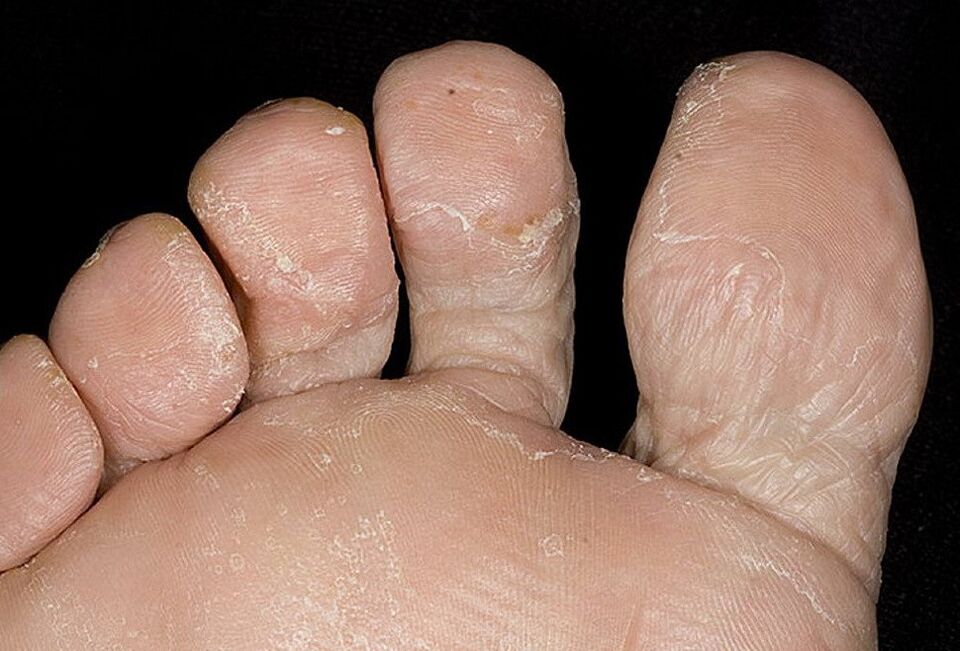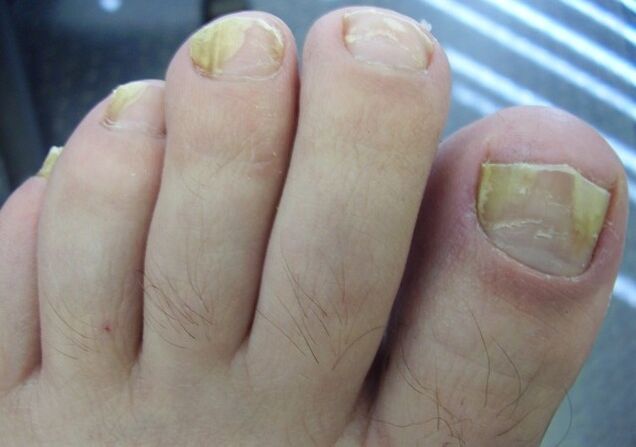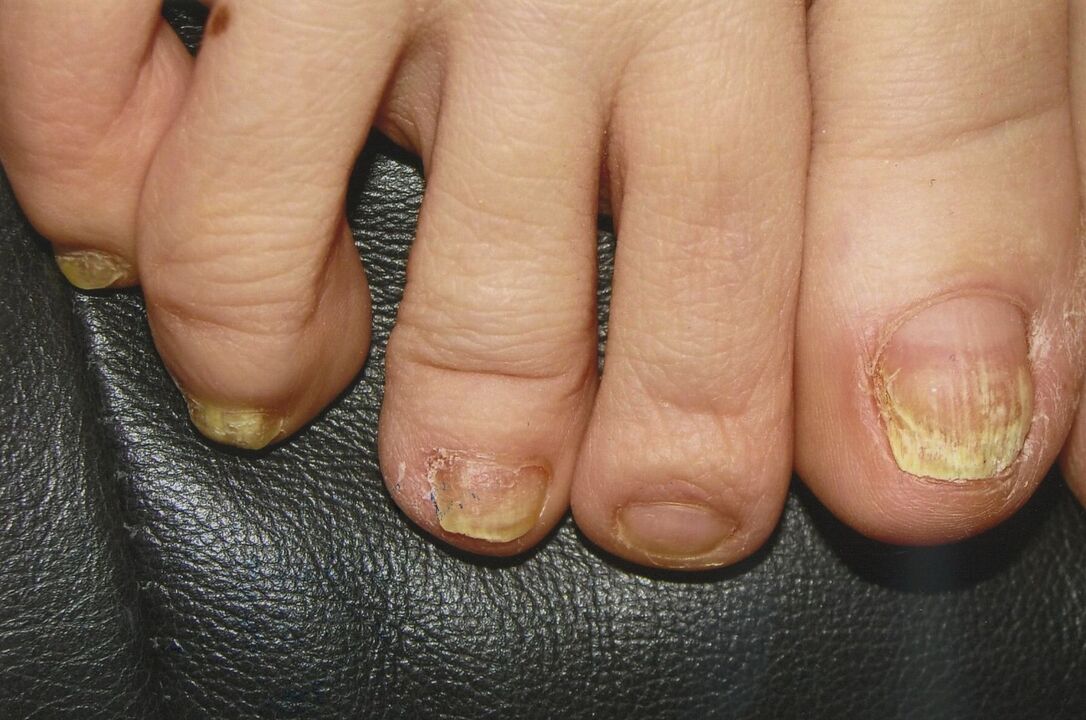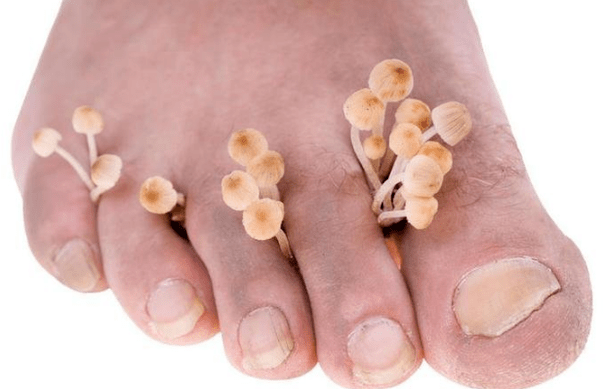
One of the most common foot diseases is athlete's foot, also known as foot mycosis. According to medical research statistics, several types of this lesion of the skin and nail plates have been identified.
The main thing is to immediately consult a doctor when a fungus appears in order to have time to protect your body from bacteria and all people around you.
What does athlete's foot look like?
Many have heard that there is a disease such as mycosis and it occurs in almost 80% of the population, but rarely does anyone face this problem personally. There are cases when infected people simply do not pay attention to the symptoms and may not start treatment on time, with disastrous consequences. But in addition to the infected body, the people around it can also suffer.
Using a photo, you can study in more detail the stages of localization of bacteria on a person's foot. However, keep in mind that in addition to visual effects, there are also symptoms that also differ in the degree of infectivity of the body.
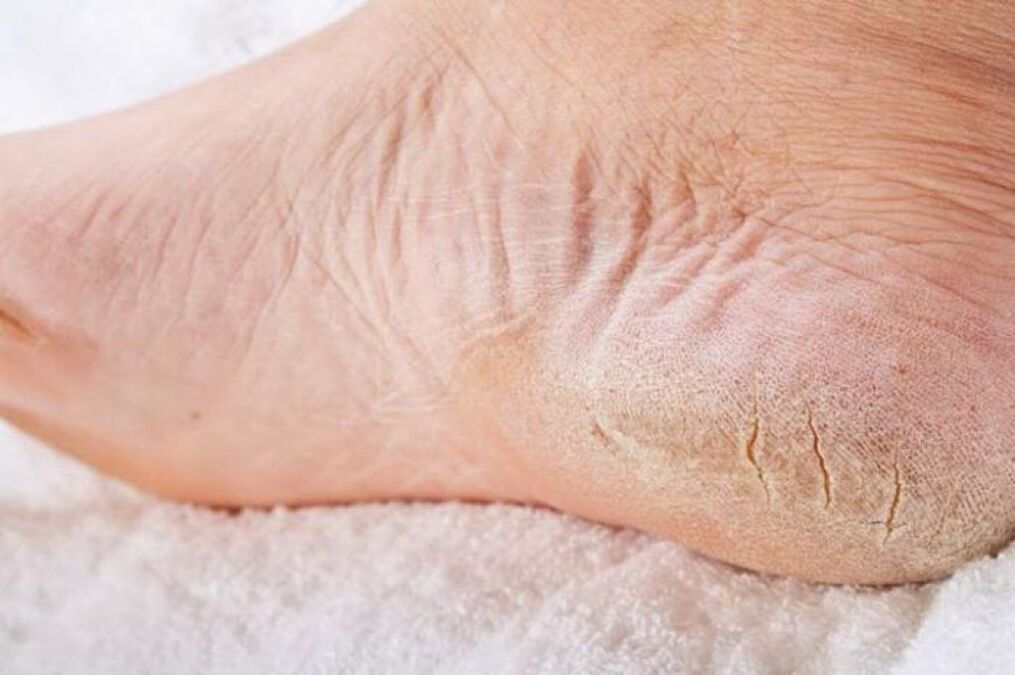
The initial phase of manifestation of athlete's foot will not be very noticeable, but a burning sensation, itching and a small redness can already indicate that the fungus has begun its active activity.
The next phase is more serious and affects both the foot and the nail plate. The nail begins to change (yellow, gray, thicker). Additionally, small white streaks and spots may appear on the nails, which is usually a good reason to see a doctor for diagnosis.
The final stage is severe peeling of the skin, the nail begins to slowly move away from the hole, ulcers and ulcers may appear. All this leads to the complete destruction of the upper layer of the epidermis, internal cracks begin to be exposed.
This is what foot mycosis looks like at every stage of development. And as you can see from the photo, the consequences of a fungal infection of the nail plates and feet can be sad.
Fungus on toes
A fungal infection of the skin between the toes is called athlete's foot, and the fungus itself is called tinea pedis. This fungus occurs through contact with an already infected person or through the use of another person's hygiene products.
Symptoms of the disease
- The skin between the fingers becomes very dry and sensitive, small scales form;
- The appearance of small purulent vesicles with fluid on the skin, and when one of them bursts, an unpleasant feeling occurs on the skin;
- The nail plates change, the structure becomes more brittle;
- Due to the fungal infection, socks and shoes may have an unpleasant smell; this one is quite piercing and specific.
Depending on the degree of development of the fungal bacteria, epidermophytosis can proceed in four phases:
Light
At the first signs of peeling on your feet, you should immediately consult a dermatologist. These are the first signs of fungus. Further development of bacteria occurs at the level of the fingers, between the fingers and on the nails. The following symptoms are redness of the skin, small cracks on the heels and feet, itching and burning in the place where the disease is more localized.
Squamous cell carcinoma-hyperkeratotic
The squamous hyperkeratotic phase of the disease is caused by mild swelling of the skin of the feet, which also leads to severe peeling of the feet and the skin between the toes.
Severe itching and burning spread throughout the entire foot area, including the nails. The color of the nail plate changes from light yellow to grayish, which leads to the destruction of the top layer of the plate itself.
The hyperkeratotic phase of the fungus has the following symptoms: a rash on the entire skin of the foot with red to blue blisters, which subsequently peel off profusely and cause pain when walking.
If you do not consult a doctor, the infection will cooperate and become a serious source of infection. This whole process is accompanied by an unpleasant foot odor.
IntertriginousThis phase is characterized by the appearance of deep cracks on the heels, accompanied by pain, and the appearance of erosive ulcers. The pain increases significantly, preventing the person from standing normally on their leg.
DyshidroticThe phase is characterized by small purulent vesicles that develop with enormous speed and cover the entire area of the foot and toes within a few days. Pustules can open on their own, causing red erosions. After the skin has dried slightly, a small amount of fluid may be released from the wounds.
The main thing is, when fungus appears on the legs, to immediately understand the symptoms and consult a dermatologist in a timely manner. The symptoms of the fungus and a visual examination should give a clear picture of the process occurring on the legs. However, you should not start self-medication, as this usually leads to ineffective consequences, leading to an even greater spread of the disease.
In order to prescribe the correct course of treatment, the doctor must know the phase of development of the fungus and identify the type of pathogen. However, before this, the patient must undergo a diagnosis, which will make the overall picture of the course of the disease clear.
How to treat athlete's foot
It should be borne in mind that depending on the phase of the disease, treatment is prescribed, which must be comprehensive.
Before starting treatment with local medications, it is necessary to relieve inflammatory processes and signs of keratinization.
To get rid of unwanted fungal bacteria, you should know the correct procedures:
- For external use, you should use creams, ointments, sprays, solutions, varnishes;
- Mandatory intake of antifungal drugs;
- In case of severe burning and itching, you should purchase sedatives to relieve the pain symptoms;
- Since the immune system is weakened when fighting the fungus, you need to take a course of vitamins and minerals that will help the body fight the infection with greater strength.
- If infectious diseases occur at the same time, the dermatologist will prescribe antibiotic treatment.
To determine specific medications, the dermatologist must know the complete picture of the course of mycosis; The age of the infected person, the reaction of the fungus to certain medications and the degree of infection of the foot areas must be taken into account.
Most medical textbooks can clearly present all the phases of the progression of athlete's foot in the form of a photo with a description of the symptoms, so that a person can determine them independently. After a visual examination and comparison with photos of the course of mycosis, the patient should immediately seek medical help from a specialist.
photo
